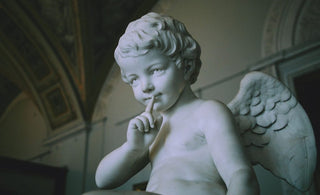
Art is one of the best alternative investments - with the right knowledge, investing in artwork may be one of the best decisions you can make. In 2024, more and more people are making the decision to invest in art - but can a piece of art be considered a collectable item?
That’s what we’re going to explore in this blog - read on to learn more about collectables, whether art qualifies as a collectable, and what to consider when investing in art.
What Counts as a Collectable?
Before we explore whether fine art is considered a collectable or not, let’s determine what exactly a collectable is. A collectable is essentially an item that is valued as something much more than it was originally purchased for (the sale price), typically due to rarity or popularity. Many items can be considered collectable; for example:- Comic books
- Sports memorabilia
- Trading cards and similar items (e.g baseball cards)
- Vintage toys (e.g beanie babies or action figures)
- Fine wine
- Classic cars
- Stamps
- Jewellery
These items will usually have to be in mint condition to be considered collector's items. For example, with comic books, even a minor defect can have a huge impact on the value.
This is why storage is so important when it comes to handling collectables. Many people will store small collectables in a protective casing, or hire sufficient storage space for larger items such as fine wine or vintage cars to ensure the items maintain their value.
Collectables are typically rare items that make a great investment. Although many vintage items are considered collectable, it’s possible that new items can qualify as collectables too; even items that are currently for sale on the primary market. Age doesn’t always determine the collectability of an item.
The terms ‘antique’ and ‘collectable’ are often used interchangeably - however, they do not have the same definition. Generally speaking, collectables are items that date from the ‘20s onwards (including coins, china, and much more), whereas collectable antiques are items over 100 years old. Not all antiques are classed as collectable items, and not all collectables are antique items.
Does Art Qualify as a Collectable?
In short, yes - art can absolutely qualify as a collectable item. However, not all pieces of art are of interest to art collectors. Several factors can determine how valuable a piece of art is; for example:- The artist’s history
- The artist’s popularity
- The provenance
- The quality of the art
- The authenticity of the work
Art is one of the best alternative investments in 2024 - not only does art stand strong against inflation, but art is a tangible asset. It is something you can enjoy without affecting the value.
Likewise, unlike many other investments, you don’t need a huge amount of wealth to begin collecting art. Although you will need some money to start with, it’s possible to collect art without breaking the bank. Check out this helpful blog post to find out more about what makes art collectable.
What to Consider When Investing in Collectables
Investing in art and other collectables is very different to investing in the stock market - the factors that impact the value of stocks are very different from the factors that influence the value of collectables. There are many factors to consider when purchasing collectable items, from the age of the item to the condition of the piece.
Valuable collectables will often be rare or highly sought-after items in mint condition - however, there is no clear-cut rule when placing value on collectable items. Although the condition of the item is a huge factor when determining the worth of a collectable item, this isn’t always the case. Depending on the circumstances, a damaged item can be more valuable than an item in pristine condition.
For example, Banksy’s piece ‘Girl with Balloon’ was estimated at £6 million - however, after being partially shredded at auction, the piece (then changed to ‘Love is in The Bin’) sold for an impressive £18.5 million - tripling its presale estimate. It is a natural assumption that age directly correlates with the value of a collectable item - many popular and valuable collectables such as cars or coins have an interesting history.
Often, due to their age, they are highly sought-after. Because they are no longer being produced, there is a higher demand. The higher the demand for an item, the more collectable an item typically is. This is why limited-edition collectables often sell for much more than mass-produced items.
Invest in Art With Grove Gallery Today
Art is very unique as an asset class - for example, art has a low correlation with stocks and bonds. Consequently, art can act as a hedge against periods of inflation. Art prices typically rise above average in times of inflation, as opposed to other goods and investment opportunities such as real estate.
Another benefit of art investment is that collecting art can be a great way to diversify your portfolio. As tangible assets, you can enjoy pieces of art without affecting their value. Hanging up a piece of artwork in your home and enjoying the art won’t decrease the estimated value, but sipping on fine wine, for example, will hugely impact the value of the wine.
Buying and selling art sounds relatively simple, but can be difficult without the right support. At Grove Gallery, our expert art advisory services can help you navigate the art market and choose the right piece of art to buy, from the right artist.
If you wish to expand your portfolio and invest your hard-earned capital in art, contact our friendly team of art experts at Grove Gallery today. We can help you to generate an average of 8% to 12% profit from art per year.






